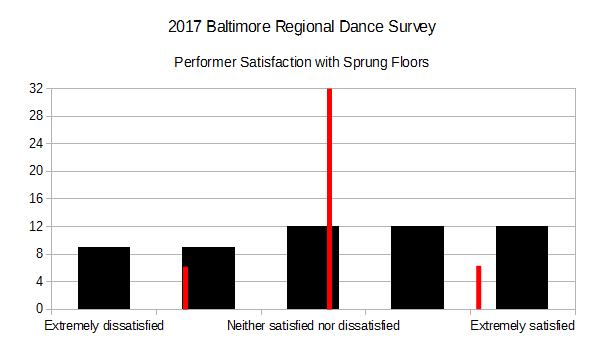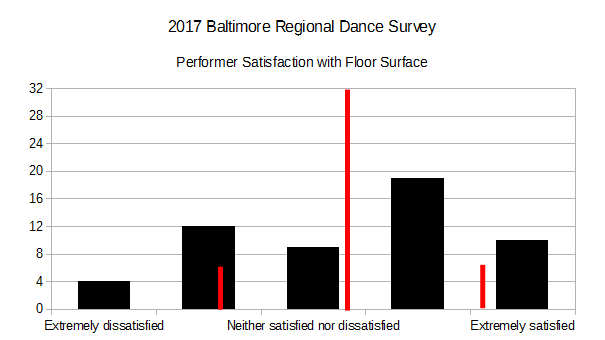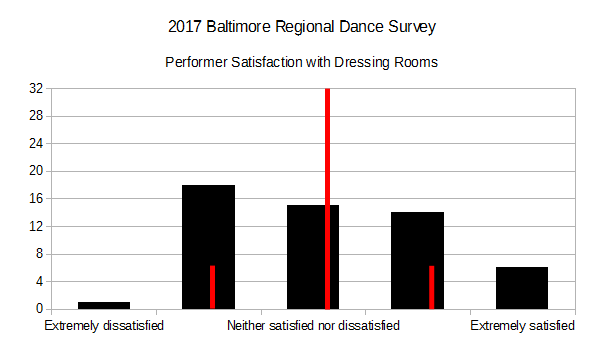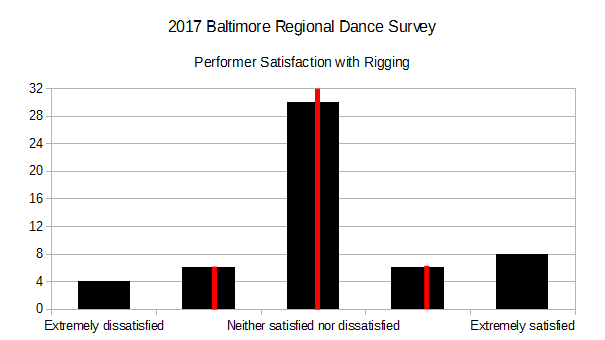Different dance forms make dramatically different demands of their performance space. Understanding that it is essentially impossible for any space to be all things to all dancers, the Baltimore Regional Dance Survey separated satisfaction questions about performance space into 10 different categories of technical or physical attributes:
Sprung floors
Floor surface specific to your dance form
Audio equipment
High ceilings
Open spaces without obstructions (e.g., columns)
Dressing rooms
Theatrical lighting
Motion capture equipment
Rigging
Projection
Respondents were asked to indicate their satisfaction in each category on a 5-step scale from “Extremely Satisfied” to “Extremely Dissatisfied.” This question has a known structural problem, because all respondents were asked to indicate their satisfaction in all categories, even if that category didn’t apply to that particular respondent – so that’s room for improvement in the future. I won’t be able to distinguish between “very satisfied because this doesn’t apply” and “very satisfied because it is critical to my performance and did everything I could possibly hope.” In many cases, it looks like many respondents simply picked “neither satisfied nor dissatisfied” for categories that did not apply. 54 respondents engaged this question. Results follow:
About floors:

In this category, the responses were amazingly similar in all categories – with a slight bias toward satisfaction.

Fairly neutral responses when it comes to the floors in performance spaces.
Sound and Lights:


Here performers are apparently a bit happier, in general, with sound than they are with lights, but these fundamental bits of production are well-addressed for existing performers.
Space to perform:


Generally, satisfaction with the ceiling height and amount of space to perform is a bit better than the floors. Ceiling height is not a major issue for these respondents. That’s good news, considering many venues in the region have relatively low ceilings that could be incompatible with dances that involve lifts. Given the small sample size, more extreme ceiling demands (e.g., aerialists) are probably not well-represented in these results.
Space to prepare:

I am a bit surprised with the results here. Considering many performance spaces listed by respondents have essentially no dressing area available, I expected a higher number of extremely dissatisfied responses.
More advanced production technologies:



Without some refinement to the question, it’s hard to interpret many of these results. I think it is safe to say that very few dance performers in the Baltimore region are using Rigging or Motion Capture (in both cases, more than half of respondents picked the most-neutral response).